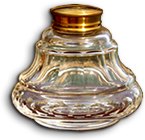



The Page Layout: When you begin planning the content for a Web site, you need to decide what content to include and how to arrange each element on each page. You really need to know who will be the target audience for your pages, what is the age group, what is their reading level, should it be formal or informal, will it be simple or complex, will it contain mostly text, or will there be an assortment of images used. Know the answers to these questions and more than half the battle will be won.
The home page needs to be user friendly, designed so that your visitors will be comfortable finding their way around the site. They should find links to all the content of your site and have a very good idea of what to expect from each hyperlink you provide. Hopefully, you will have a consistent look throughout all the pages in the site. One way to do this is either use or create Templates for page consistency.Create Navigation Schemes: You should consider working a plan for how the visitors to your site will navigate through the pages. It is important to keep a consistent look and feel for all Text, Navigation Buttons, Icons etc., from page to page. If you are using a complex navigation system that uses JavaScript or Flash ActionScript, please consider using an alternative Text based navigation system elsewhere on the page. This is usually found at the bottom of the page and is used as a backup to the image-based navigation system.
All pages need a link back to the HOME page, do not have your visitors click the Browser Back button to return to the main page. The rationale for this is that your visitor might have navigated to your Web page as a result of a search and clicking the Back button will only take them back to where they started from.
Creating a Title for each Web page: Every Web page needs a Title; and hopefully not just page 2, page 3, or untitled. The page title appears at the very top of the Browser window and should have a direct connection to what appears on the actual page. It is very important that you use a couple of the Keywords that appear in the text of the page in the Title of the page. Search engines compare the text in page titles to the keywords typed into the search textbox. If a search engine returns “Untitled Document,” the Web designer has forgotten to add a title, and frankly, it looks very unprofessional. You can add a title directly into the textbox provided in Dreamweaver, or choose the Code view and type it directly into the code.
Choosing Filenames for Web pages: When you begin to build pages for your Web sites, use descriptive file names that reflect the content of the page. For your Home page be sure to name it index.html, all other pages should be fairly descriptive.
Window servers use .htm as the default extension, whereas Macs and UNIX use .html. I’m not really sure if there are more Windows servers or UNIX servers working on the Web, but both extensions work very well. You can have Dreamweaver Preferences set the default extension for you to either .htm or .html, personally, I rather see that you used .html.When you are naming Web pages, DO NOT use “spaces”, “special characters”, or “punctuation marks” in the naming of files or graphic images. NEVER use a “number” for the first character of a filename. To ensure that everything will load properly on all platforms, including UXIX, assume the filenames are case-sensitive and use lowercase characters.